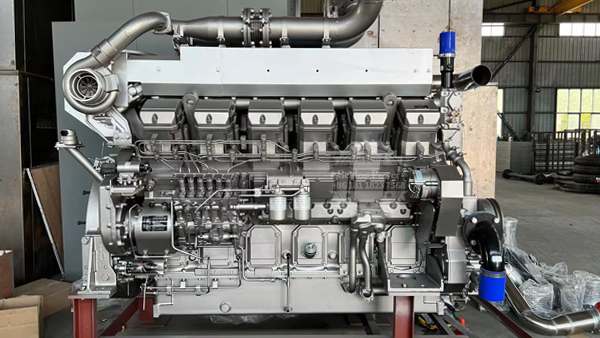What role does the engine oil of the generator set play in the operation of the generator set? Here is a detailed introduction:
1. Lubrication
The primary function of engine oil is to lubricate moving parts. The oil forms a hydraulic oil film between the metal surfaces to avoid direct contact with metal parts and reduce friction. When the oil film is not enough to avoid direct contact with metal parts, the following situations occur: friction generates heat; Produce local bonding; Metal transfer causing chafing or sticking; Extreme pressure wear control.
Modern lubricants include extreme pressure (EP) anti-wear additives. When the load on the parts is high enough that a hydraulic oil film cannot be formed, these additives form a chemically bonded molecular oil film on the metal surface under high pressure to avoid direct contact and wear. The oil washes away pollutants on important components and acts as an engine cleaner. Sludge, paint film and oxide buildup on pistons, piston rings, valve rods and oil seals can cause serious engine damage if the engine oil does not play a controlling role. Oils with optimal additives will keep these contaminants suspended until they are removed by the oil filtration system or during the oil change process.
2. Protection
The oil provides a protective barrier that isolates non-similar metals to avoid corrosion. Corrosion, like wear, can cause metal debris to fall off engine parts. Abrasion is like a slow-acting wear process.
3, hydraulic action
Oil also acts as a hydraulic medium on the engine, typical applications being Jakob brakes and STC injectors. Additive oils rely on additives to resist specific contaminants over their useful life. Oil additives affect the overall performance of the engine more than the oil itself. Without oil additives, even the highest quality oil can not meet the requirements of the engine. Additives include:
(1) Detergent or dispersant to keep insoluble substances suspended until the oil is changed. The oil filtration system cannot remove these suspended substances. Too long an interval between oil changes can cause deposits to form in the engine.
(2) inhibitors to maintain the stability of the oil, avoid acid corrosion of the metal surface, and avoid rust when the engine is not running.
(3) Other oil additives help oil lubricate high-load areas of the engine (such as valve and injector systems), prevent chafing and sticking, control foam formation, and prevent air from remaining in the oil. Engine oil must be proportioned in such a way that the oil does not blister as a result of the mechanical stirring process associated with the action of many oils. Because of insufficient oil film protection, foaming oil can cause engine damage similar to damage caused by insufficient oil.
4. Cool down
The engine needs to cool internal components, and the main cooling system cannot provide this cooling. Motor oil is an excellent heat transfer medium. Through contact with the different components, heat is transferred to the oil and then to the main cooling system in the oil cooler. Because the specific calorific value of the oil is low, and in the engine itself does not have a cooling effect. However, due to the heat generated by fuel combustion in the engine, when the engine is working, the oil can bring the heat back to the oil tank and then distribute it to the air to help the water tank cool the engine, and the real cooling effect is the water (or antifreeze liquid) outside the engine housing.
5. Seal
The oil fills the uneven surface of the cylinder liner, piston, valve rod and other internal parts of the engine and acts as a seal for the combustion exhaust gas.
6. Shock absorption
The oil film between the contact surfaces plays the role of buffering and damping. High load areas (such as bearings, pistons, connecting rods and gear trains) must require damping. When the pressure of the engine cylinder port rises sharply, the load on the piston, piston chips, connecting rod and crankshaft bearings is suddenly intensified, and the load is lubricated by the transmission of the bearing, so that the impact load is buffered.
Post time: Jul-13-2023

